Which Witch is Witch
What is a witch, and who gets to call themselves one? If ever there were two more controversial or ire-provoking questions than these, I am yet to find them. Nowadays, those of us who live in the post-Industrial nations of the world treat the word “witch” as a title to claim and squabble over. Which is ironic really, when you consider that for many centuries, the witch was a person to fear, a bane on cattle and crops; and for those who were accused of being one, a path to prosecution and possibly either the gallows or pyre.
I’ve already blogged about the origins of the word “witch,” or more specifically, the first attestations of its Old English ancestor: wicce (f)/wicca (m)/wiccan (pl). As I argued then, given the contexts in which those attestations appear and their clear parallels in Old Norse narratives of Heathen magic and magical practitioners, the first Witches were most likely a kind of Heathen ritual or magical specialist.
Now, that’s all well and good. But what about practitioners today? After all, not everyone claiming or squabbling over the title of “witch” is a Heathen. If anything, most seem to consider Heathenry and Witchcraft two completely separate paths—paths that are, for the most part, largely in opposition to each other. Additionally, for many within the Traditional or Folkloric Witchcraft communities, the “real” witches were Christians, and it’s the Pagans and Heathens who are the latecomers to the Craft. (Another irony given those aforementioned origins!)
Perception and Meanings
So, with all that said, where do we go as modern practitioners? Because believe it or not, this isn’t about telling everyone they have to be Heathen or GTFO of the Craft!
The thing about words is that their meanings change over time. People have literally spent centuries altering the definition of witchcraft to fit their social, political, and religious agendas. “Witch” and “witchcraft,” simply put, were labels of exclusion used to delineate and enforce the boundaries of society while identifying those people, practices, and beliefs perceived to be harmful to that order to eradicate them (see Kieckhefer cha. 8 for further discussion). Given the central role of perception here—which is itself incredibly malleable and largely shaped by belief—it’s little wonder those definitions have shifted so much over the centuries. That perception of harm is why it was entirely possible for the same person to be considered a “cunning person” or “charmer” by some, and a “witch” by others. To quote Kirsteen Macpherson Bardell in her paper, Beyond Pendle: the ‘lost’ Lancashire Witches:
“Again, the evidence indicates that healers had a widespread reputation in the community but that this ambiguous connection with magic could turn into suspicion of something more malevolent.”

The witch who could heal could also hex, and all that. A precarious position for any practitioner.
Moreover (and to further complicate matters), “witch” has become the go-to gloss for any word used to describe ritual specialists in other cultures as well, its application largely dependent on how those practitioners were perceived by cultural outsiders. This not only expanded the definitions of “witch” even further, it also obscured, shifted, or even outright erased the original understandings those cultures had of those practitioners. (An accusation we can also lay at the feet of the appropriated version of the term “shamanism” as well, if we’re being honest.)
Either way, it’s little wonder we have so much to argue over now.
Unfortunately, the truth of the matter is that outside of its original cultural and religious context, the word “Witch” doesn’t really have a fixed meaning. Both now and in the past, it’s been used as a box of sorts. For some, that box was a place to toss the people and things they wanted to get rid of, while for others, that box holds something treasured to be gatekept. In one box, lives one kind of person’s nightmares, whereas the other box holds another kind of person’s ideals and dreams.
Again and again, it’s perception that shapes those walls.
The Familiar Thread
Nebulous though the meanings of “witch” can be, however, there is something more solid to be found in that cloud. A way to sort through the mist, if you will. As unlikely as it may seem, there is a core there that exists regardless of religious belief, socio-political goals, or mystical aspirations. We see this core in a theme that is repeated over and over from the eleventh century writings of the early English homilist Ælfric (and likely earlier) to the early modern English and Scottish trial accounts.

It’s the presence of “devils” or familiar spirits, be those familiar spirits Otherworldly or Dead. A thread that predates the development of the continental witchcraft narrative by centuries.
“Now some deceiver will state that witches (wiccan) often say truly how things will turn out. Now we will say truly that the invisible devil who flies around the world and sees many things makes known to the witch what she may say to men so that those who seek out that wizardry may be destroyed.”
From De Auguriis by Ælfric of Eynsham
In my blog talking about those earliest attestations of wicce/wicca/wiccan, I discussed the strong parallel between King Alfred’s 9th century renegotiation of Exodus 22:18 and the image of the Old Norse seeress or völva in the Poetic Edda poem Völuspá. To summarize for those of you who are yet to read that post, both the wiccan of Alfred and the völva of the Edda were portrayed traveling between homes, exchanging magic and seership for the hospitality of their (predominantly female) hosts—a theme we see repeated a number of times in the Old Norse sources.
Given the common root of the early English and Norse cultures and their history of exchange and interaction, shared themes or patterns can hardly be surprising. Yet despite this long relationship, even the suggestion that early English witches might have been analogous to the Norse völur in some ways is still somewhat controversial.
Perhaps it hits too many of the same buttons indiscriminately smashed by Margaret Murray for comfort? Or maybe anti-Wiccan sentiment among modern Heathens is to blame? I suspect both may be a part of it. However, it’s also important to point out here that the völva (much like the shaman) isn’t nearly so tarnished by those centuries of negative PR. This is especially the case among Anglophones, but it likely extends into other cultures too given the outsized influence of Anglophone media on the rest of the world. In short, völva has a certain cachet that “witch” simply doesn’t have and perhaps offers a way to be “witchy” without inviting the same degree of hostility from others. Any comparison between the two then must feel like a sullying of something dearly held.
You see, even as Pagans and Heathens we are shaped by those Christian perceptions; some of us still borrow our prejudices instead of setting them aside.
Devils? Nah. Let’s Talk Elves and Witches!
However, to return to my point, that partnership between witches and so-called “devils” also appears in Old Norse sources. Over and over, we find female magical practitioners in league with other-than-human people.
For example, in Ynglinga saga, Freyja (a goddess associated with magic referred to as seiðr) is described as a blótgyðja or “sacrificial priestess” and appears to lead the cult centered around her brother’s burial mound. Her brother, of course, is Freyr, a god described as the ruler of Álfheimr or “Elf Home” (cognate to the Scots word Elfhame) in the poem Grímnismál. Another place we see this partnership between a “witch-coded” priestess and elf-coded male is in chapter 28 of Örvar-odds saga, where we find a king by the name of Álfr (literally “elf”) and his wife Gyðja (“priestess”), who appears connected to Freyr. Gyðja is also depicted shooting magical projectiles from her fingernails, an ability we also see demonstrated in Jómsvíkinga saga by the goddess Þorgerðr Hölgabrúðr, who Hilda Ellis Davidson identifies with Freyja (Davidson, Roles of the Northern Goddess pp. 177-178).
And while we’re on the subject of magical projectiles (also known as “elfshot”), allow me to mention a couple more sources that feature this theme as additional illustrations of this partnership. The first source I want to mention is the 10th century metrical charm Wið Færstice (“Against a Stitch”), which features a narrative set at a burial mound that likely describes witches shooting projectiles made by elven smiths. The second source I want to mention is the confession of the 17th century witch, Isobel Gowdie, in which she claimed to obtain her magical projectiles from elves (and the Devil), who made their houses in mounds (Alaric Hall, Elves in Anglo-Saxon England pp. 112-115).
Despite the centuries between them, the narrative of Wið Færstice and themes of Isobel Gowdie’s confession align in that both involve witches shooting elf-made magical projectiles and mounds. Quite remarkable when you think about it! Clearly, those things go together like PB&J!
(Can confirm.)
I could go on (no really, I could; this is my special interest). I’ll spare you all for now, though. We’ll be here all day otherwise.
Moving Forward
The partnership between witch and familiar is perhaps one of the oldest and most consistent threads of the witchcraft story regardless of era, at least as it has played out among English and Scots-speaking groups in mainland Britain, or in other words: those groups who once would have likely used the words wicce/wicca/wiccan in their daily speech. While this pattern can also be seen in other cultural groups within the British and Irish Isles as well as continental witchcraft narratives, those are beyond the scope of this post.
Now does that mean that everyone has to have a familiar spirit in order to be a “real” witch?
Not necessarily. What I will say, however, is that one does have to be somewhat other. Some of us come by that otherness via ancestry i.e. someone way back when made some connections that subtly changed them and those who came after them, while some of us become other through encounters with the Dead and/or Otherworldly, eventually founding relationships. It may not be popular to say this, but that’s the thread.
Some Personal Theorizing
My personal theory is that the witch originally began as an analog of the Old Norse gyðja, who, as Terry Gunnell points out in his paper Blótgyðjur, Goðar, Mimi, Incest, and Wagons: Oral Memories of the Religion(s) of the Vanir, was mostly associated with the cult of Freyr in the sources. This interpretation would accord well with the etymology put forth by the linguist Guus Kroonen, which traces the word’s derivation from the same linguistic roots as the Proto-Germanic *wiha-1 and *wiha-2 (“holy” and “sanctuary”). A second etymology that also accords well with this interpretation considering the centrality of burial mounds in some of these narratives is that given by the American Heritage Dictionary of Indo-European Roots, which traces wicce/wicca to the Germanic *wikkjaz or “necromancer.” An association that also appears in the later Aldhelm glosses as well.

For tonight, god is an (elf) DJ.”
Final Words
Still, that thread doesn’t erase those centuries of loose meanings and adaptations. If the word “witch” inspires you, then I encourage you to respectfully take on that mantle. I am not here to police or gatekeep you or your practice. That’s just tiring and pointless. As I’ve said before (many times), the Craft protects itself. Just know that the witch-mantle is weighty and can get you into trouble. Be mindful of its history, both the good and the bad, and remember on whose side you stand.
And whatever you do, never, ever forget the possibility that it all began with devotion and service.
Now, wear that mantle accordingly.
Sources
Davidson, Hilda E., and Hilda R. Davidson. Roles of the Northern Goddess. London: Psychology Press, 1998.
Hall, Alaric. Elves in Anglo-Saxon England: Matters of Belief, Health, Gender and Identity. 2007.
HarperCollins Publishers. “Appendix I – Indo-European Roots.” American Heritage Dictionary – Search. Accessed May 9, 2025. https://ahdictionary.com/word/indoeurop.html.
Kieckhefer, Richard. Magic in the Middle Ages. Cambridge: Cambridge University Press, 2021.
Kroonen, Guus. Etymological Dictionary of Proto-Germanic. Brill Academic Publishers, 2013.
Poole, Robert, and Kirsteen Macpherson Bardell. “Beyond Pendle: the ‘lost’ Lancashire Witches.” In The Lancashire Witches: Histories and Stories. Manchester: Manchester University Press, 2002.
Seven Viking Romances. London: Penguin UK, 2005.
Sturluson, Snorri. Heimskringla: History of the Kings of Norway. Austin: University of Texas Press, 2010.
Terry Gunnell. “Blótgyðjur, Goðar, Mimi, Incest, and Wagons: Oral Memories of the Religion(s) of the Vanir.” The Center for Hellenic Studies. Last modified March 30, 2021. https://chs.harvard.edu/chapter/part-ii-local-and-neighboring-traditionsterry-gunnell-blotgydjur-godar-mimi-incest-and-wagons-oral-memories-of-the-religions-of-the-vanir/.
“Örvar-Odds Saga.” Snerpa.is / Heim. Accessed May 9, 2025. https://www.snerpa.is/net/forn/orvar.htm

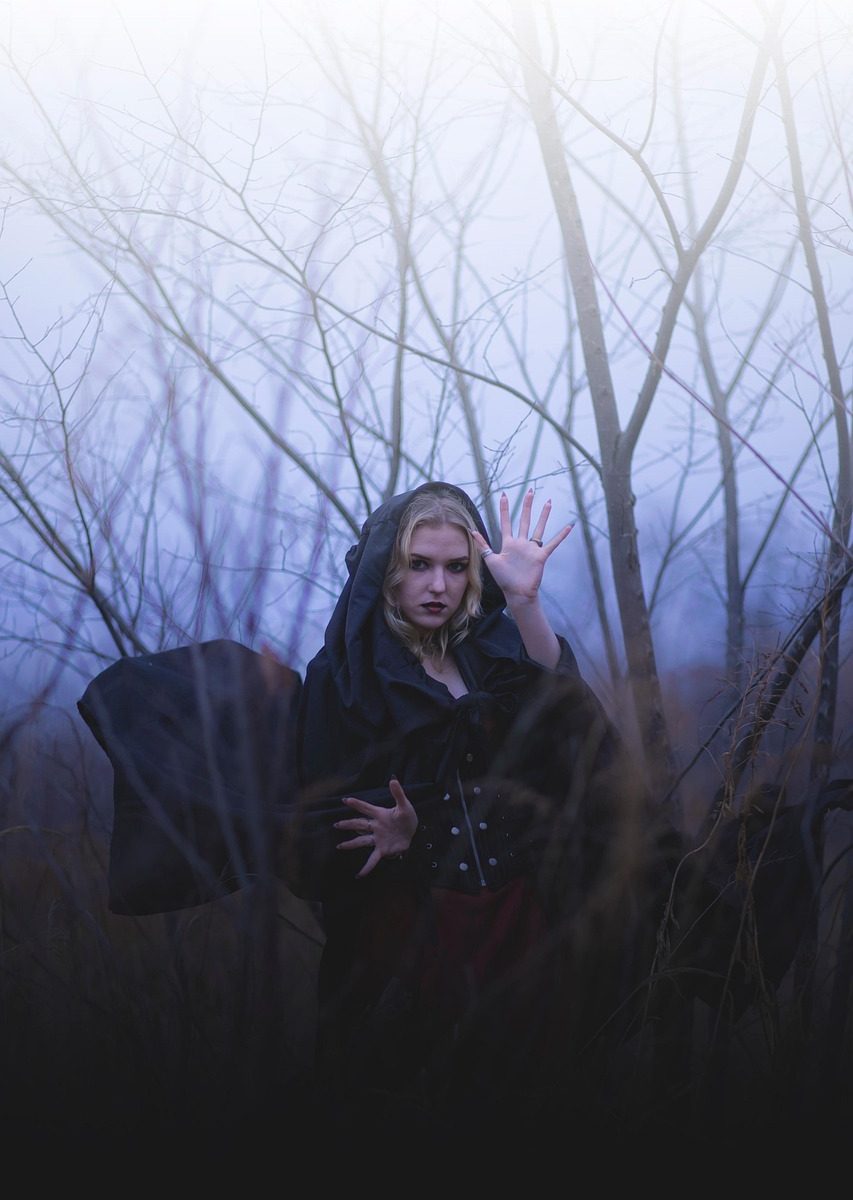




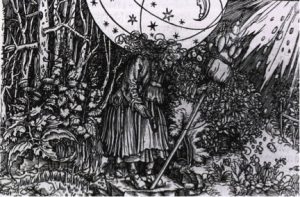







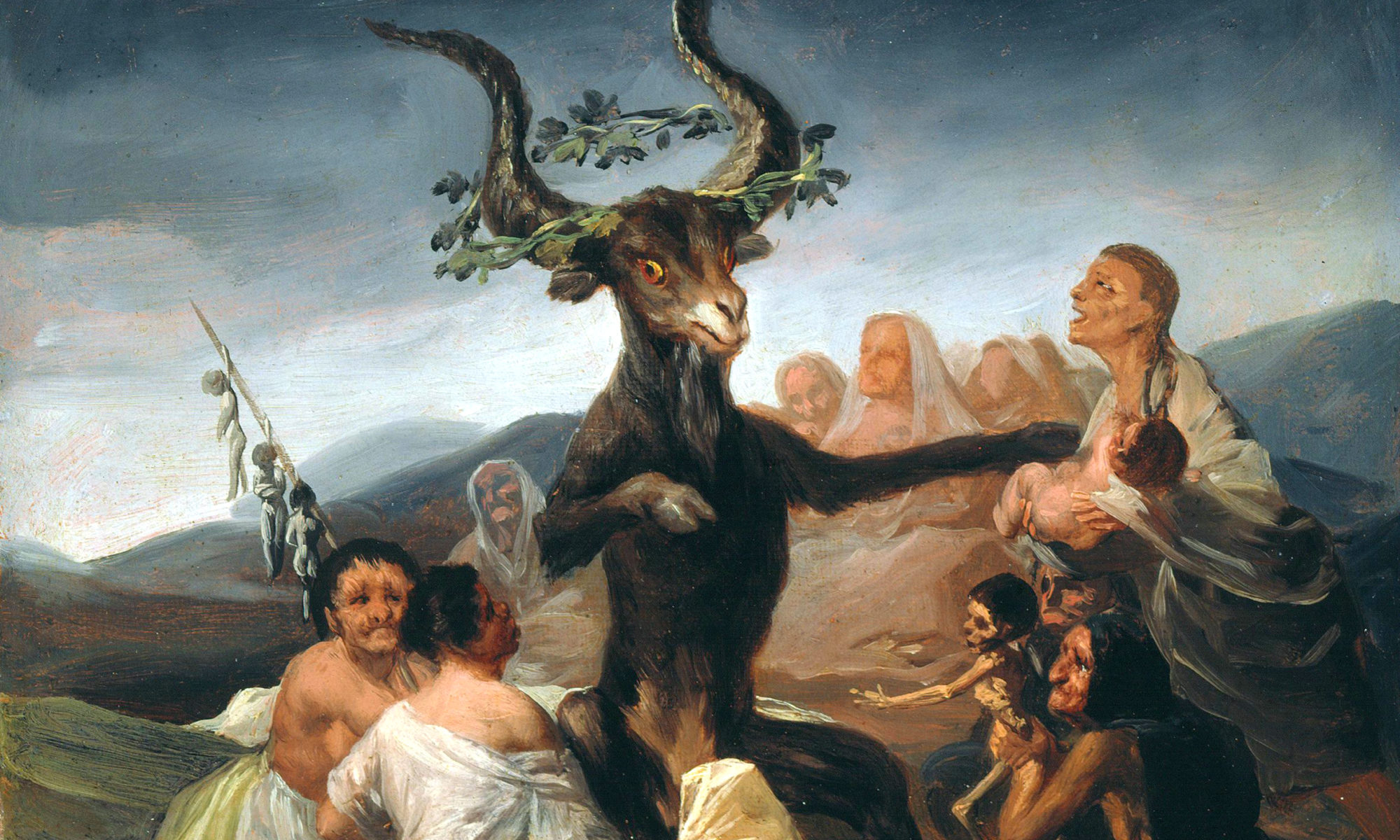
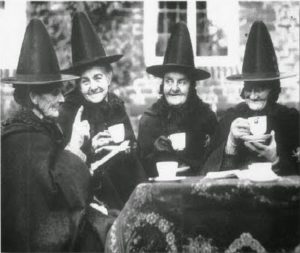 the power of loneliness, I guess. And I was lonely back then. I was a lone witch living in the kind of place people would shout threats at me on the street for being a witch (which they’d seemingly discerned from my general vibe as opposed to me being out of the broom cupboard).
the power of loneliness, I guess. And I was lonely back then. I was a lone witch living in the kind of place people would shout threats at me on the street for being a witch (which they’d seemingly discerned from my general vibe as opposed to me being out of the broom cupboard).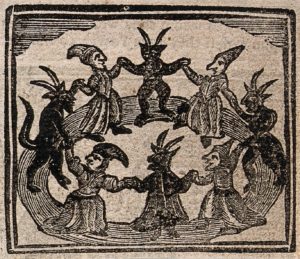 the fairy royalty or devilish figure to whom they are ultimately pacted (Wilby 84, 85). For the Early Modern person, it was the familiar that made the witch, but that familiar (though often appearing as a solitary figure),
the fairy royalty or devilish figure to whom they are ultimately pacted (Wilby 84, 85). For the Early Modern person, it was the familiar that made the witch, but that familiar (though often appearing as a solitary figure), 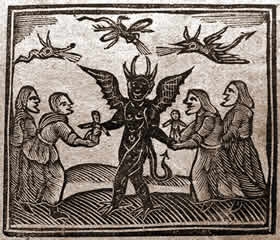 whose testimony we get the first attestation of the word ‘coven’), bears little resemblance to this more modern familial imagining. Where members of modern covens center their bonds with each other, it is the otherworldly power to whom each witch (and familiar) is pledged that is at the center of any group or proceedings in the historical sources (Wilby 81). This is about the familiar rather than the familial, and rather than protecting her ‘sisters’ at any cost as an Owens would, Isobel named the members of her group in her testimony (apparently without the use of torture to loosen her lips). Which can seem quite treacherous until you consider that for her, her main loyalty was probably not to any humans at all.
whose testimony we get the first attestation of the word ‘coven’), bears little resemblance to this more modern familial imagining. Where members of modern covens center their bonds with each other, it is the otherworldly power to whom each witch (and familiar) is pledged that is at the center of any group or proceedings in the historical sources (Wilby 81). This is about the familiar rather than the familial, and rather than protecting her ‘sisters’ at any cost as an Owens would, Isobel named the members of her group in her testimony (apparently without the use of torture to loosen her lips). Which can seem quite treacherous until you consider that for her, her main loyalty was probably not to any humans at all. occurred that I believe we need to pay attention to here.
occurred that I believe we need to pay attention to here.  rising of the Pleiades. Moreover, their Beltane disappearance coincided with the yearly disappearance of the Pleiades from the night sky. It seemed a little too coincidental, especially when the characters you’re writing are Gentry who worship the ‘Seven Queens’.
rising of the Pleiades. Moreover, their Beltane disappearance coincided with the yearly disappearance of the Pleiades from the night sky. It seemed a little too coincidental, especially when the characters you’re writing are Gentry who worship the ‘Seven Queens’. As outlandish as all of this may seem, this is not so different from the kind of otherworldly interest in creative types recorded in older sources. The storytelling bard has become the TV show writer, artists who may have painted scenes from Fairy while locked up in Bedlam, now create digitally, and famous Fairy-Firkler Morgan Daimler has been pointing out the weird waves of disinformation about Themselves online for a while.
As outlandish as all of this may seem, this is not so different from the kind of otherworldly interest in creative types recorded in older sources. The storytelling bard has become the TV show writer, artists who may have painted scenes from Fairy while locked up in Bedlam, now create digitally, and famous Fairy-Firkler Morgan Daimler has been pointing out the weird waves of disinformation about Themselves online for a while. their own Pagan period peers. Yes, as unjust as a monstrous read is when it comes to figures like Medusa and Circe, that’s probably how many people at the time probably saw them.
their own Pagan period peers. Yes, as unjust as a monstrous read is when it comes to figures like Medusa and Circe, that’s probably how many people at the time probably saw them. If there’s one thing about the underlying ‘string-pullers’ of Hellier, it’s that the history doesn’t quite add up – at least not in the usual way. Greg is sent a pdf of The Rebirth of Pan: Hidden Faces of the American Earth Spirit, a book by a man called Jim Brandon (pseudonym). It’s a wild ride through archaeology, conspiracy theory, cryptozoology, paranormal phenomena, and Crowley. Rather than the Ancient Greek figure, the ‘Pan’ spoke of in this book (a being which the author argues is actually the conscious, collective identity of the earth/contained within the earth) is an aggregate term, a way of naming what the author believes to be manifestations of this consciousness of/within the earth.
If there’s one thing about the underlying ‘string-pullers’ of Hellier, it’s that the history doesn’t quite add up – at least not in the usual way. Greg is sent a pdf of The Rebirth of Pan: Hidden Faces of the American Earth Spirit, a book by a man called Jim Brandon (pseudonym). It’s a wild ride through archaeology, conspiracy theory, cryptozoology, paranormal phenomena, and Crowley. Rather than the Ancient Greek figure, the ‘Pan’ spoke of in this book (a being which the author argues is actually the conscious, collective identity of the earth/contained within the earth) is an aggregate term, a way of naming what the author believes to be manifestations of this consciousness of/within the earth.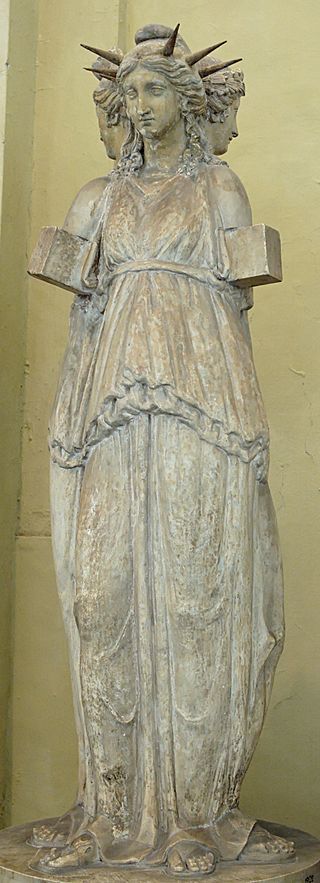 kid’ on the block. Based on what I’ve seen so far of this new kid, I’m pretty sure the ‘old kids’ aren’t too happy with it. Something – a collection of beings in a trench coat masquerading as something else is trying to come onto their turf. And as humans, the creators and consumers of stories that shape the dominant consensus, we’re faced with a choice (another one).
kid’ on the block. Based on what I’ve seen so far of this new kid, I’m pretty sure the ‘old kids’ aren’t too happy with it. Something – a collection of beings in a trench coat masquerading as something else is trying to come onto their turf. And as humans, the creators and consumers of stories that shape the dominant consensus, we’re faced with a choice (another one). than clickbait masquerading as a so-called ‘enlightened’ and pro-science point about wider society. It was a collection of cheap shots against groups of people who already face discrimination in society. Rather than emerging as a ‘defender of science’, Ceri Bradford cast herself as the ‘mean girl’ that would be more at home in a schoolyard picking on the kid she hopes can’t fight back.
than clickbait masquerading as a so-called ‘enlightened’ and pro-science point about wider society. It was a collection of cheap shots against groups of people who already face discrimination in society. Rather than emerging as a ‘defender of science’, Ceri Bradford cast herself as the ‘mean girl’ that would be more at home in a schoolyard picking on the kid she hopes can’t fight back.
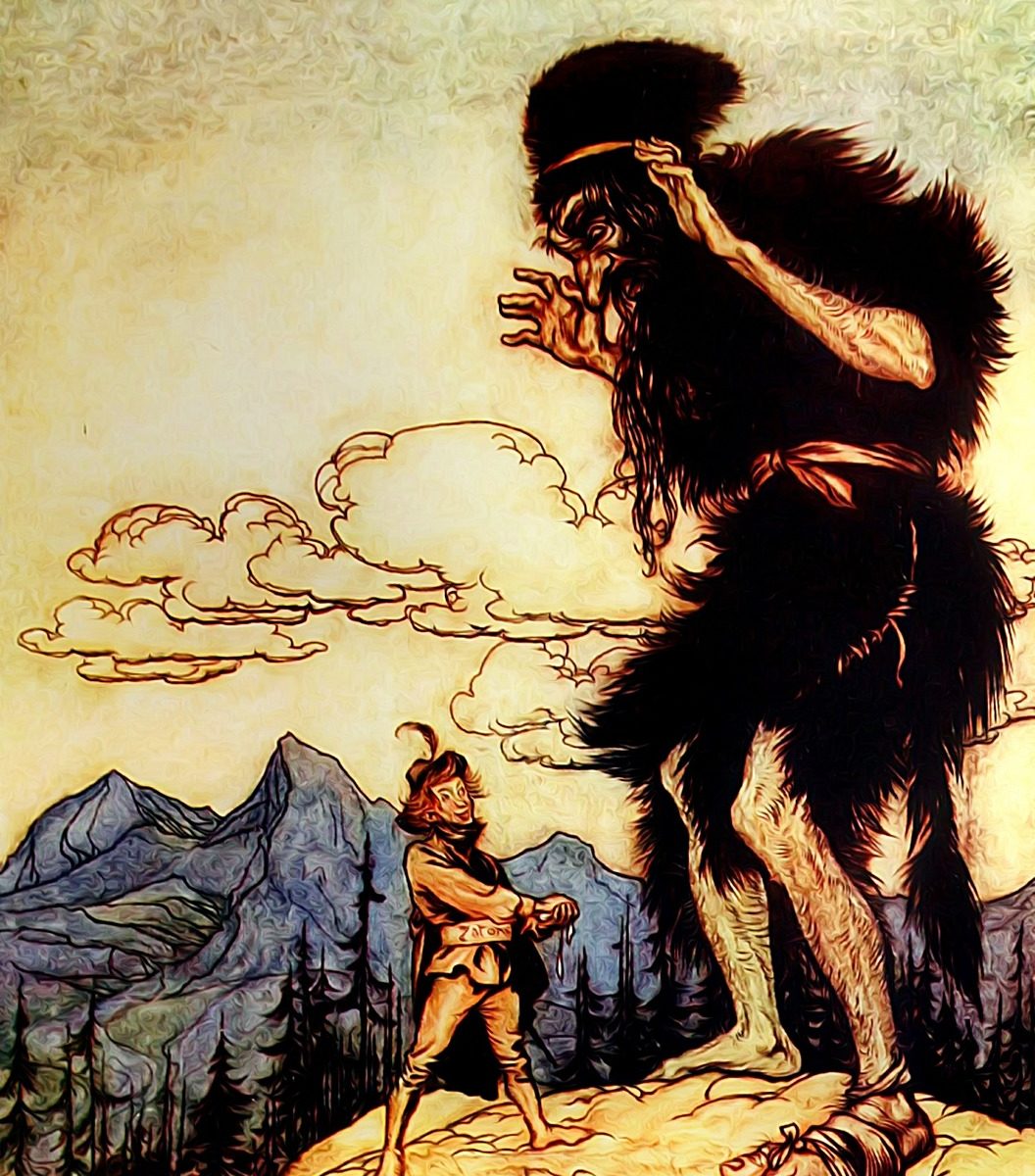
 book”, or “just a story”. Storytelling, in whichever form it takes, is inherently magical. It is the mirror that shows us who we are, shadows and all. But most importantly, it can be an agent for change. Especially when millions of people become emotionally invested in a story.
book”, or “just a story”. Storytelling, in whichever form it takes, is inherently magical. It is the mirror that shows us who we are, shadows and all. But most importantly, it can be an agent for change. Especially when millions of people become emotionally invested in a story. created through mysterious and deadly processes in order to fight the otherworldly and monstrous on the Continent. It sounds like the stereotypical D&D dungeon crawl (but on TV), right?
created through mysterious and deadly processes in order to fight the otherworldly and monstrous on the Continent. It sounds like the stereotypical D&D dungeon crawl (but on TV), right? cops on Black people for having the audacity to have a BBQ.
cops on Black people for having the audacity to have a BBQ.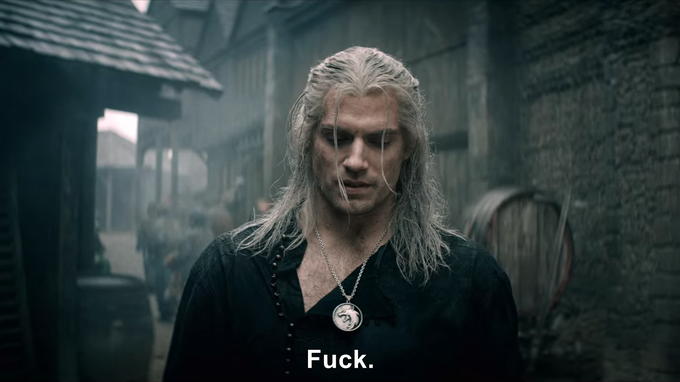 have become the person people go to for clearings at around the age of nineteen, but it really didn’t start there for me. I was very…popular…with all manner of beings as a kid, and a good percentage of them were quite harmful. So it’s a work in progress, and a lot of dealing with the old shadow baggage.
have become the person people go to for clearings at around the age of nineteen, but it really didn’t start there for me. I was very…popular…with all manner of beings as a kid, and a good percentage of them were quite harmful. So it’s a work in progress, and a lot of dealing with the old shadow baggage.
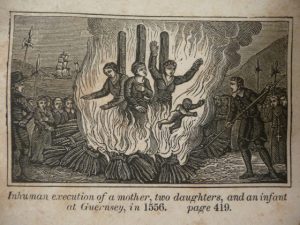 carry within the very fiber of our beings. The heritage of modern witches is not the same as the heritage of those who might have been called witches in the Heathen period, we hold different traumas in our collective psyche. The biggest trauma for those of us working within predominantly European-derived cultures, is that of the lamentably much-ridiculed period of history that was the European witch craze.
carry within the very fiber of our beings. The heritage of modern witches is not the same as the heritage of those who might have been called witches in the Heathen period, we hold different traumas in our collective psyche. The biggest trauma for those of us working within predominantly European-derived cultures, is that of the lamentably much-ridiculed period of history that was the European witch craze.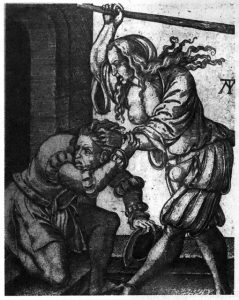

 I remember running wild under those steely grey skies, I remember countless adventures up on the moors and in the hidden places where adults didn’t seem to go: like the ‘ravine’ that was really a small stream down the side of an old Victorian factory that led into a more modern industrial park; or the ruins of Victorian farms built in the shadow of a brooding moor.
I remember running wild under those steely grey skies, I remember countless adventures up on the moors and in the hidden places where adults didn’t seem to go: like the ‘ravine’ that was really a small stream down the side of an old Victorian factory that led into a more modern industrial park; or the ruins of Victorian farms built in the shadow of a brooding moor. yourself nodding, and mentally giving the author a “Right on, man! You tell em!”? Well, I’m reading a book like that right now. Had this been a church sermon, the entire section that inspired this post would have had me shouting “Hallelujah” and “Praise the Lard!”, because it is just so nice to come across someone who writes things that you so completely agree with. That doesn’t happen a lot for me.
yourself nodding, and mentally giving the author a “Right on, man! You tell em!”? Well, I’m reading a book like that right now. Had this been a church sermon, the entire section that inspired this post would have had me shouting “Hallelujah” and “Praise the Lard!”, because it is just so nice to come across someone who writes things that you so completely agree with. That doesn’t happen a lot for me.
